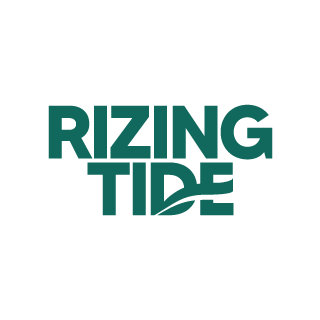
Everything You Need to Know About the New Student Loan Forgiveness Plan
Published August 26, 2022
Student loan debt is a $1.6 trillion problem for more than 45 million Americans—or at least, it was until this week. On Wednesday, August 24, President Biden announced a student loan forgiveness plan that will cancel $10,000 (or $20,000 for Pell Grant recipients) of federal student loan debt for every eligible borrower. The number of eligible borrowers totals around 43 million.
This is massive news for debt-saddled PT students—so here’s what you need to know about this program.
What is happening?
President Biden collaborated with the U.S. Department of Education (USDE) to create a three-prong plan to provide student debt relief, improve the federal student loan system, and address skyrocketing university costs. This plan is packed with a ton of changes that benefit student borrowers, but one piece of it is taking the spotlight: loan forgiveness.
Under this plan, the USDE will forgive up to $10,000 of outstanding federal student loans for each eligible borrower. Students who’ve received a Pell Grant (which you can learn about here) will see up to $20,000 of debt cancellation.
What does “up to $10,000” mean?
Essentially, “your relief is capped at the amount of your outstanding debt.” So, if you’re eligible for this program and you have a remaining loan balance of $7,500, you’ll receive $7,500 of debt cancellation instead of the full $10,000. If you have a loan balance of $10,000 or more, you’ll receive the full $10,000.
Who is eligible for this student loan forgiveness?
Per the White House fact sheet, “Borrowers are eligible for this relief if their individual income is less than $125,000 ($250,000 for married couples).”
Most borrowers who meet that income threshold will be eligible for $10,000 of loan forgiveness. Borrowers who meet that income threshold and who received a Pell Grant will be eligible for $20,000 of loan forgiveness.
Loans taken out after June 30, 2022 are not eligible for relief.
Does this apply to graduate debt or just undergraduate debt?
Per these sources, this loan forgiveness applies to both undergraduate and graduate debt. So, PT debt cancellation is totally on the table!
Do I have to apply for this student loan relief?
It depends. If the Department of Education has your income data on hand (like it does for 8 million borrowers), then you might be eligible for automatic debt cancellation—no applications necessary! But the vast majority of borrowers will need to submit an application in the coming weeks because their income data isn’t on file at the USDE.
The application isn’t available yet, but it will be available “before the pause on federal student loan repayments ends on December 31st.” If you want updates about the application process, sign up here, on the USDE’s official website.
Will I have to pay taxes on my student debt cancellation?
Nope! When Congress passed the American Rescue Plan in 2021, it included a provision stating that debt relief wouldn’t count as taxable income through 2025.
Does this apply to both federal and private loans?
No. This relief applies only to federal loans.
What if I already paid some of my federal loans?
This debt cancellation applies only to outstanding balances, so if you already paid some of your federal loans, you cannot seek reimbursement for those payments.
That said, federal student loan payments have been paused since March 2020. If you’ve made payments during the freeze, you may “contact your loan servicer to request that your payment be refunded.”
What else will this student loan relief plan do?
As mentioned above, this three-prong plan is full of proposals to address different aspects of student debt. Here is what’s definitely happening:
- Forgiving more loans: The eligibility criteria for the Public Service Loan Forgiveness (PSLF) program are temporarily waived—meaning borrowers who are employed by “non-profits, the military, or federal, state, Tribal, or local government may be eligible to have all of their student loans forgiven.” (Learn more here.)
- Extending the repayment freeze: The USDE extended the federal student loan repayment freeze through December 31, 2022, after which it will end.
Here is what the USDE is also proposing (though these proposals are not set in stone):
- Reduce monthly loan payments: The USDE wants to “[cap] monthly payments for undergraduate loans at 5% of a borrower’s discretionary income.” This is half of the current repayment rate, and would save borrowers $1,000 a year, on average.
- Raise the non-discretionary income threshold: This change would acknowledge cost-of-living inflation in order to protect more non-discretionary income (i.e., what borrowers spend on rent, food, and household essentials). This would prevent borrowers who earn less than $15 an hour at a full-time job from making any monthly payments.
- Forgive loan balances after 10 years: The USDE wants to forgive loans with balances of $12,000 or less after 10 years instead of 20.
- Cover unpaid monthly interest: Through this proposal, a borrower who pays their full monthly payment (even if that payment is $0 because of their low income) will never accrue interest on their loan.
- Permanently change PSLF eligibility: The USDE wants to permanently adopt the current eligibility changes to the Public Service Loan Forgiveness program. This would permanently allow “borrowers who have worked at a nonprofit, in the military, or in federal, state, tribal, or local government” to apply for full loan forgiveness.
- Automatically recertify income: Currently, borrowers have to recertify their income each year in order to qualify for a payment plan. This proposal would allow borrowers to remain in this program without manual recertification.
Why is the government offering student loan relief?
Americans hold roughly $1.75 trillion in student loan debt—with each borrower owing an average of $28,950. This debt has a butterfly effect; it reduces personal spending, puts stress on social programs, blocks borrowers from entering the housing market, and prevents borrowers from starting small businesses. Not only that, student debt disproportionately affects Black and Indigenous borrowers.
With this plan, the federal government is hoping to reduce racial wealth inequities, help borrowers get on their feet, and kickstart the economy.
Is it legal for the Biden administration to enact this debt relief plan?
Since this plan wasn’t passed through the U.S. House or Senate, it’s likely to see legal challenges, which is why the Justice Department wrote and released an opinion about the program this week. It cited the HEROES Act of 2003: a post-9/11 bill allowing the Secretary of Education to modify student financial assistance programs during wartime and national emergencies. Former President Trump enacted a national emergency in 2020 because of the COVID-19 pandemic. That national emergency is still active today and, well, here we are.
Read a more thorough explanation here.
Student loan debt is a monster of a problem. While this plan won’t make the root of the problem disappear, it will undoubtedly change the lives of millions of students and graduates. And that’s something worth celebrating!
Got any more questions about the new student loan forgiveness plan? Drop them below, and our team will do its best to answer them!

